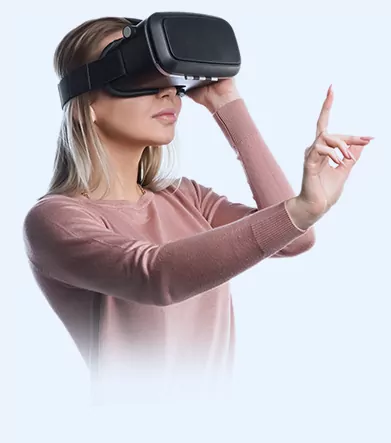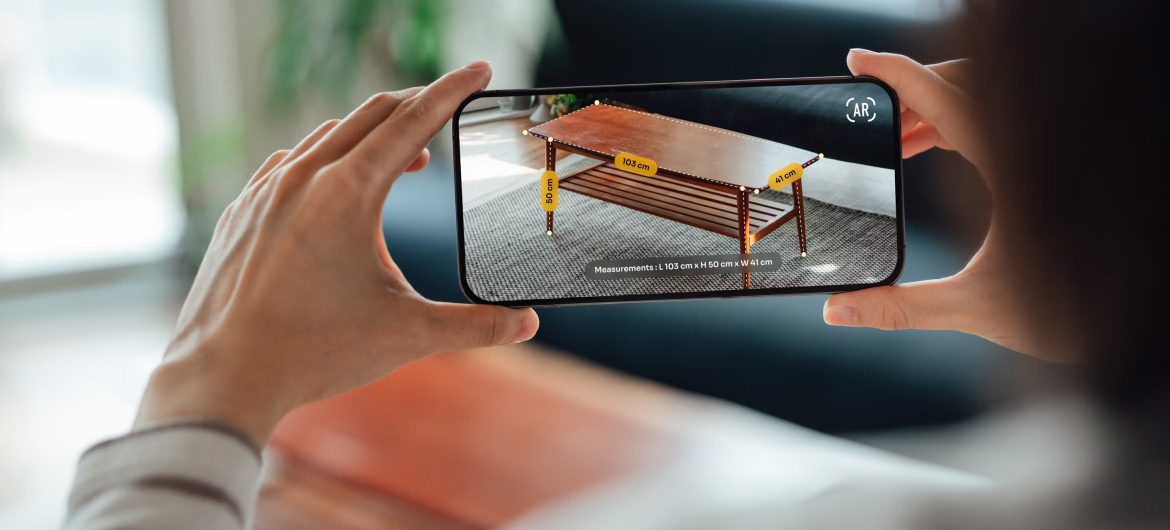Enhanced Reality (XR) is an umbrella term encompassing various immersive technologies, including Virtual Reality (VR), Augmented Reality (AR), and Mixed Reality (MR). XR represents a fusion of real and virtual worlds, offering a range of experiences that blend digital elements with the physical environment. This article explores the concept of XR, its different forms, applications, benefits, challenges, and future trends.

Understanding Enhanced Reality (XR)
XR integrates digital content with the real world, creating immersive and interactive experiences that transcend traditional digital interfaces. It combines the capabilities of VR, AR, and MR to offer a spectrum of experiences, each with unique applications and benefits.
- Virtual Reality (VR):
- Definition: VR creates a fully immersive digital environment that users can interact with through specialized hardware, such as VR headsets. It simulates a completely virtual world, isolating users from their physical surroundings.
- Applications: VR is widely used in gaming, training simulations, education, and virtual tours. It provides a sense of presence and immersion, allowing users to explore and interact with virtual environments.
- Augmented Reality (AR):
- Definition: AR overlays digital information onto the physical world using devices like smartphones, tablets, or AR glasses. It enhances the user’s perception of their real environment by adding digital elements.
- Applications: AR is used in various fields, including navigation, retail, education, and entertainment. It provides contextually relevant information and interactive experiences that complement the real world.
- Mixed Reality (MR):
- Definition: MR combines elements of both VR and AR to create interactive experiences that blend digital content with the real world. Users can interact with both virtual objects and physical elements simultaneously.
- Applications: MR is used in fields like design, engineering, and collaborative work. It enables users to manipulate virtual objects as if they were part of the physical environment.
Key Applications of XR
- Education and Training:
- Immersive Learning: XR technologies offer immersive educational experiences that enhance understanding and retention. VR simulations can replicate complex scenarios, such as historical events or scientific experiments, providing hands-on learning opportunities.
- Skill Development: AR and MR are used for skills training in various professions, including healthcare, manufacturing, and aviation. These technologies provide interactive and practical training experiences, improving skill acquisition and performance.
- Healthcare:
- Surgical Training: VR simulations are used for surgical training, allowing medical professionals to practice procedures in a risk-free environment. These simulations help improve precision and confidence before performing real surgeries.
- Patient Rehabilitation: AR and VR are employed in rehabilitation programs for physical therapy and mental health treatment. Interactive exercises and games motivate patients and track their progress.
- Retail and E-Commerce:
- Virtual Try-Ons: AR technology enables customers to virtually try on clothes, accessories, or cosmetics before making a purchase. This enhances the shopping experience and reduces return rates.
- Interactive Displays: In-store AR experiences provide customers with additional product information and interactive features, enhancing their shopping journey.
- Entertainment and Gaming:
- Immersive Experiences: VR gaming offers fully immersive experiences, allowing players to enter and interact with virtual worlds. AR games, such as Pokémon GO, blend digital elements with the real world, creating engaging and interactive experiences.
- Virtual Events: XR technology facilitates virtual concerts, sports events, and live performances, providing audiences with immersive experiences from the comfort of their homes.
- Workplace Collaboration:
- Remote Collaboration: MR enables remote teams to collaborate in virtual workspaces, interacting with 3D models and shared digital content. This enhances communication and productivity for distributed teams.
- Design and Visualization: XR technologies aid in design and visualization processes, allowing architects, engineers, and designers to explore and modify virtual models in real-time.

Benefits of XR
- Enhanced Engagement:
- Immersion: XR technologies provide immersive experiences that capture users’ attention and enhance engagement. This leads to better learning outcomes, more effective training, and improved user satisfaction.
- Improved Accessibility:
- Remote Participation: XR enables remote participation in events, meetings, and training sessions, breaking down geographical barriers and making experiences more accessible to a global audience.
- Increased Efficiency:
- Streamlined Processes: XR technologies streamline processes by providing interactive and visual tools for design, training, and collaboration. This improves efficiency and reduces the time and cost associated with traditional methods.
- Personalized Experiences:
- Customization: XR allows for personalized experiences by adapting digital content to individual preferences and needs. This customization enhances user satisfaction and engagement.
Challenges and Considerations
- Technological Barriers:
- Hardware Requirements: XR experiences often require specialized hardware, such as VR headsets or AR glasses, which can be expensive and limit accessibility for some users.
- Performance and Compatibility: Ensuring smooth performance and compatibility across different devices and platforms can be challenging, particularly as technology continues to evolve.
- Privacy and Security:
- Data Collection: XR technologies collect and process large amounts of data, including personal information and behavioral data. Ensuring robust privacy and security measures is crucial to protect users’ information.
- Content Development:
- Quality and Diversity: Developing high-quality XR content requires significant resources and expertise. Ensuring diverse and engaging content that meets users’ needs and preferences is essential for widespread adoption.
- Health and Safety:
- Physical Discomfort: Extended use of VR headsets can lead to physical discomfort, such as motion sickness or eye strain. Designing ergonomically friendly devices and providing usage guidelines can help mitigate these issues.
Future Trends in XR
- Advancements in Hardware:
- More Affordable Devices: The development of more affordable and accessible XR hardware will drive greater adoption and enable a wider range of users to experience XR technologies.
- Improved Performance: Advances in hardware performance, such as higher resolution displays and more responsive sensors, will enhance the quality and realism of XR experiences.
- Integration with AI:
- Intelligent Interactions: Integration with artificial intelligence (AI) will enable more intelligent and adaptive XR experiences. AI can enhance natural language processing, gesture recognition, and personalized content.
- Expanded Applications:
- Broader Use Cases: XR will continue to expand into new applications, such as mental health therapy, remote work, and environmental simulations. These applications will leverage XR’s immersive capabilities to address diverse needs and challenges.
- Enhanced Collaboration:
- Cross-Platform Integration: Improved cross-platform integration will enable seamless collaboration between different XR devices and applications, enhancing interoperability and user experience.

Conclusion
Enhanced Reality (XR) represents a significant leap forward in how we interact with digital and physical worlds. By blending virtual and real elements, XR technologies offer immersive and interactive experiences that transform various aspects of life, from education and healthcare to entertainment and collaboration. As technology continues to advance, XR will play an increasingly important role in shaping the future, offering new opportunities for engagement, efficiency, and innovation. Addressing challenges related to hardware, privacy, and content development will be key to unlocking the full potential of XR and ensuring its widespread adoption and impact.


